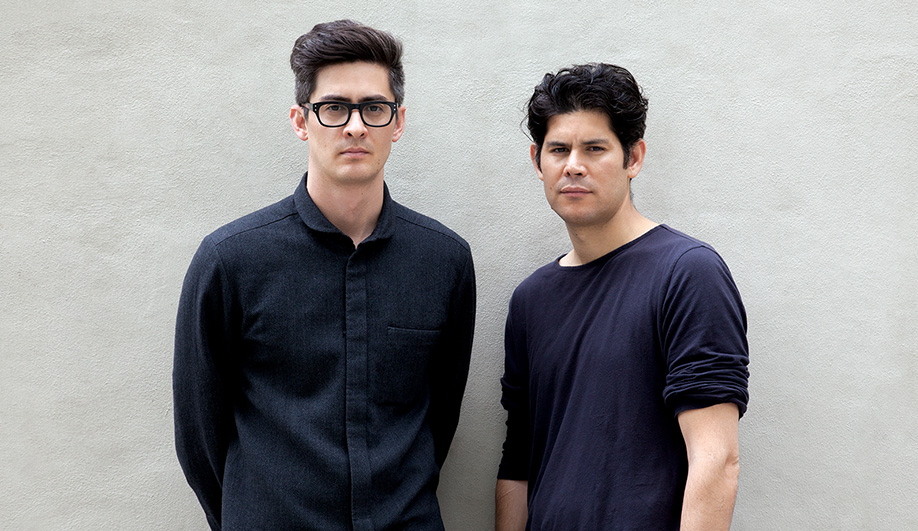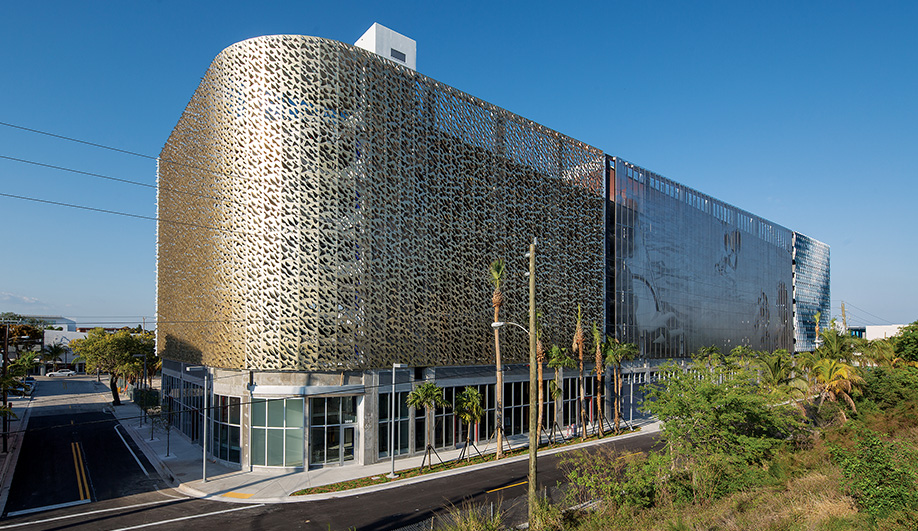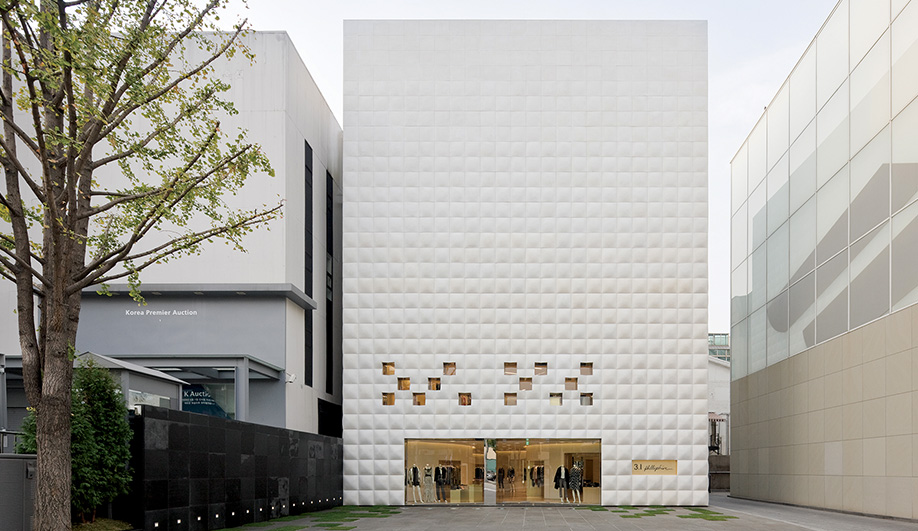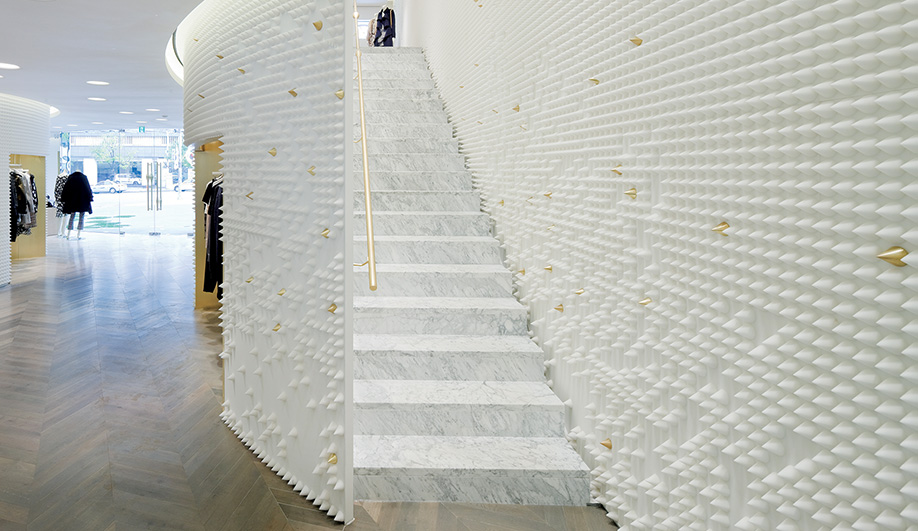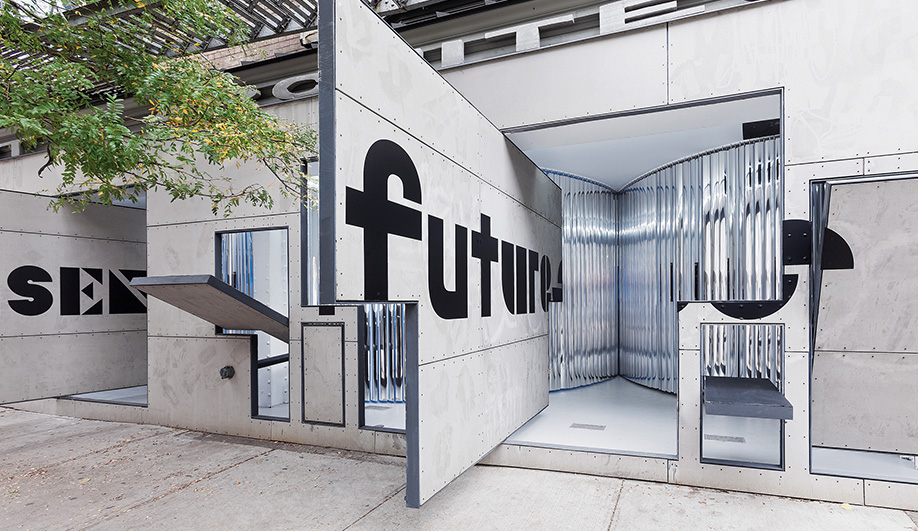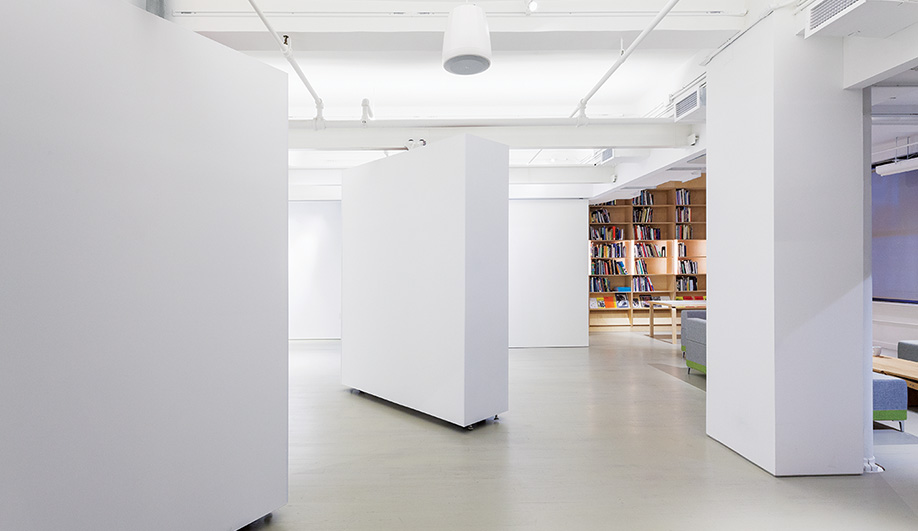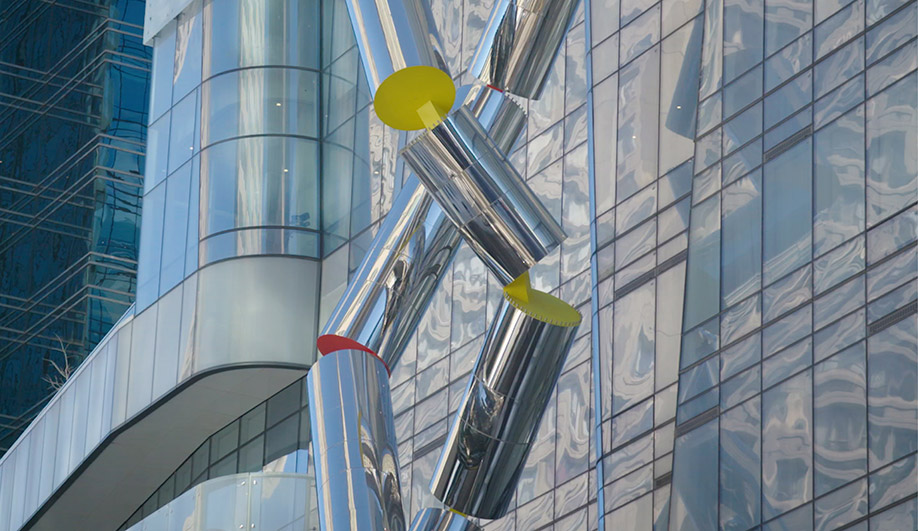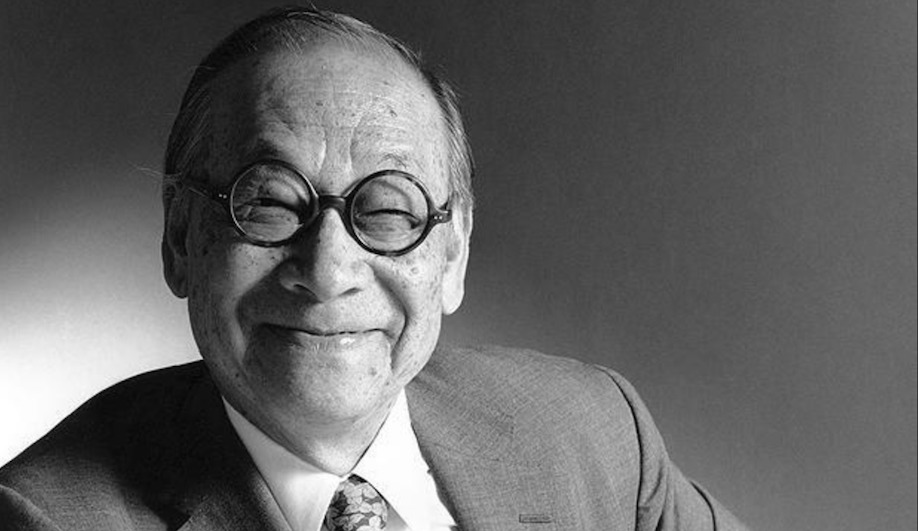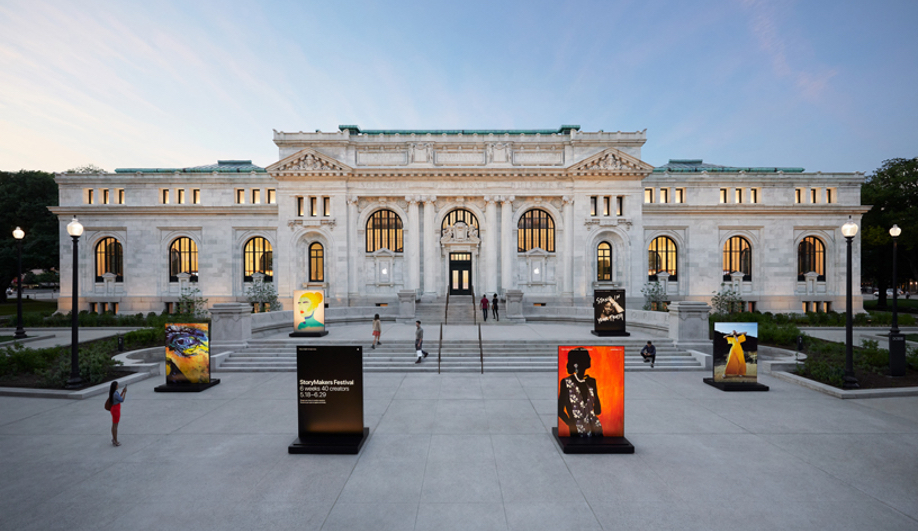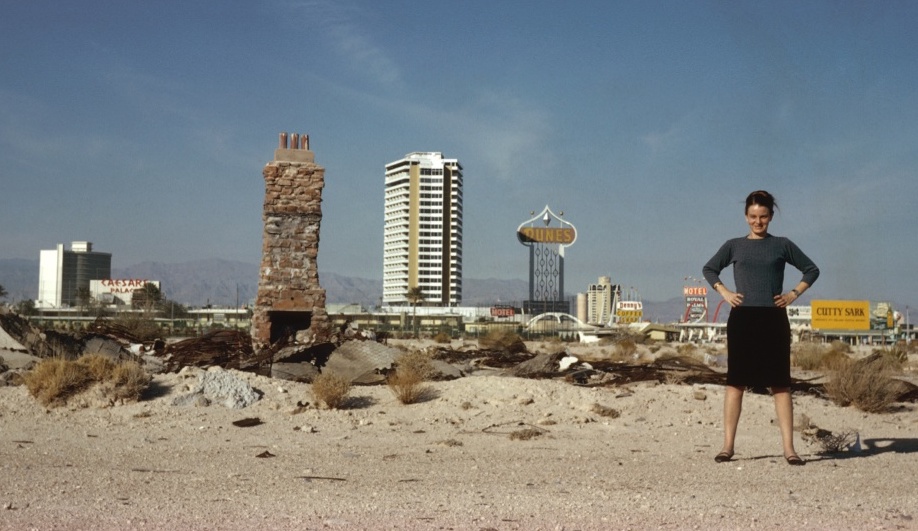Dominic and Christopher Leong operate in that sweet spot between experimentation and commercial contracts – a formula that is earning international attention.
Backstory
At Leong Leong, architecture runs in the family. Christopher and Dominic are following in the footsteps of their father, Wayne (an architect based in St. Helena, California), with whom they still sometimes collaborate. Although both brothers studied architecture, they initially chose separate paths. Christopher, 38, earned his degree at Princeton University, then took a job with SHoP Architects in New York; Dominic, two years younger, studied at Columbia University in New York, and worked for Bernard Tschumi before co-founding the PARA Project architecture office, also in New York.
In 2009, when American fashion house 3.1 Phillip Lim approached Dominic about a range of projects, it seemed like the ideal time for a family reunion. “Christopher and I always imagined working together,” says Dominic, who had impressed the label with the design of the company’s Los Angeles boutique while with his former firm. “3.1 Phillip Lim was expanding at the time. It was opportune timing.” Leong Leong’s first job was a boutique in Seoul with a chic exterior made up of pillowy white concrete tiles. Inside, white and brass spikes protrude from the walls, while the more intimate interior volumes are lined in warm natural leather and custom wallpaper by Korean-American artist Wook Kim.
Since then, the pair has designed the brand’s New York office, and they have picked up other fashion-related projects, including the Opening Ceremony boutique inside New York’s Ace Hotel; and the flagship for PYE, a men’s shirt brand based in Hong Kong. Over the years they have developed a keen eye for using both high and low materials in inventive applications, and slicing up spaces in unconventional ways.
Turning Point
Leong Leong got its start in the fashion world, but the brothers were determined to avoid being pigeonholed. “We started self-initiating projects and doing installations around the city,” says Dominic, pointing to such projects as Turning Pink, where they built a cave-like inhabitable interior in a Manhattan gallery from sheets of rigid pink insulation. “For us, it’s interesting to be in the realms of both commerce and pure culture,” adds Christopher. “We can take the installation practice into the commercial realm and vice versa. We find a lot of territory to explore while blending those boundaries.”
This conceptual approach led to their designing the U.S. pavilion for the 2014 Venice Biennale of Architecture. They obscured the Doric column entrance from end to end with mirrored vinyl blinds, giving the neoclassical structure a new personality with a product usually reserved for office interiors. Inside, the space was a landscape of bi-level work tables topped with smoky transparent acrylic. Eight staff members from the newly formed firm OfficeUS worked at the desks for the duration of the biennale, transforming everyday architectural work into performance. At the end of each day, their tools and models were stored on a shelf beneath the tabletop, where they remained on view for visitors. “The work surface became this interface between the office and the public,” says Dominic.
Material Matters
Leong Leong uses materials in ways that imbue them with a sense of mystery. For the facade of a parking garage in Miami’s Design District, gold titanium-coated steel panels are patterned with curvilinear fins cut and folded from the metal. “We wanted to create a facade that would read at two different scales,” says Christopher, referring to the perspectives from the sidewalk and the nearby highway. “When you’re up close, you see shadow and depth, but from afar you see more of a pattern.” Inside, the slices animate the garage with a play of light and shadow. Interestingly, the garage incorporates two other facades, one by architecture firm IwamotoScott and artist John Baldessari.
In 2014, to create a facility for the curatorial practice master’s program at New York’s School of Visual Arts, Leong Leong collaborated with Charles Renfro of Diller Scofidio + Renfro. The centre includes a 280-square-metre learning environment with a space in which to practise installing exhibitions. Customized mobile walls made of drywall and plywood rotate and slide on ceiling tracks, enabling it to be reconfigured with countless layouts. “The idea is that it becomes a laboratory,” says Dominic. “There’s a push and pull between art and space.”
On the Books
Everything from a country house in upstate New York to the accessories floor of the Au Pont Rouge department store in St. Petersburg, Russia, has been realized in the Leong Leong studio. Its largest project to date is a new 15,000-square-metre campus for the Los Angeles LGBT Center, slated to break ground next year and open in 2018.
“It’s a mixed-use campus with housing for seniors and at-risk youth, emergency overnight beds, social services and arts facilities,” says Christopher. “The design is based on a mosaic, with different parts fitting together,” he continues, noting how the four buildings will house distinct functions, linked through intimate, pedestrian-friendly courtyards. “They connect everything,” he says, “while creating buffers between zones for the many types of users.”
Curriculum Vitae
Location
New York and Los Angeles
Established
2009
Awards
2013 MoMA PS1 Young Architects Program finalist
2010 AIA New Practices New York
2007 Architectural League Prize (Dominic Leong)
Projects
Current Los Angeles LGBT Center, McCadden campus, Los Angeles (2018)
Current Au Pont Rouge department store, St. Petersburg, Russia (2015)
Current Private residence, Millbrook, New York (2016)
2015 Miami Design District city garage, Miami
2014 Master of arts in curatorial practice program facility, School of Visual Arts, New York
2014 OfficeUS, Venice Biennale U.S. pavilion
2012 3.1 Phillip Lim headquarters, New York
2009 3.1 Phillip Lim, Seoul

